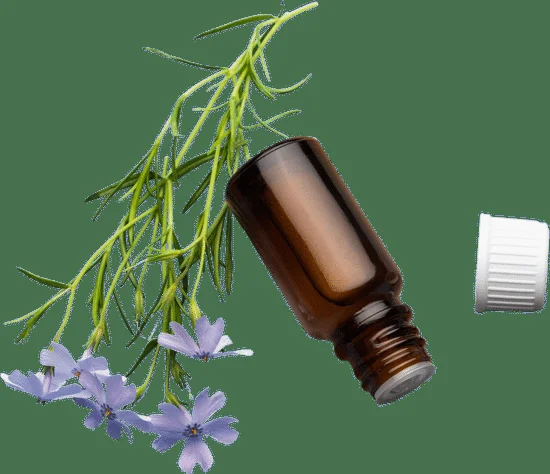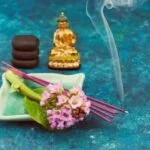Aromatherapy, a practice that has been around for centuries, harnesses the power of essential oils to promote physical and mental well-being. But what exactly are aromatherapy essential oils? In this article, we will delve into the world of aromatherapy and explore the benefits and uses of these potent natural substances. From understanding the science behind their effectiveness to creating personalized blends, we will guide you on your journey towards unlocking the power of aromatherapy essential oils.
Aromatherapy, as a holistic therapeutic approach, traces its origins back to ancient civilizations such as Egypt and China. It revolves around the use of aromatic plant extracts, known as essential oils, to improve overall health and well-being. These oils are extracted from various parts of plants through processes like steam distillation or cold-press extraction.
Essential oils are highly concentrated liquids containing volatile compounds derived from plants. Each oil possesses unique properties and characteristics that contribute to its scent and therapeutic effects. Some popular types include lavender oil for relaxation, peppermint oil for energizing effects, cedarwood oil for grounding qualities, and eucalyptus oil for respiratory support.
By incorporating aromatherapy essential oils into our daily lives, we can enhance our emotional and physical states. Aromatherapy works by stimulating our olfactory system-the part of our sensory system responsible for smell-and triggering responses in our brain that can affect mood, emotions, memory, and stress levels. This branch of study is known as aromachology-the psychological impact scents have on individuals.
Whether you are seeking relief from stress or looking to improve your sleep quality or boost your immunity naturally, aromatherapy essential oils offer a natural solution that can be tailored specifically to your needs. In the sections that follow, we will explore different types of essential oils commonly used in aromatherapy and provide guidance on how to incorporate them into your daily routine. Stay tuned to uncover the multitude of benefits and possibilities that await you on this aromatic journey.
Understanding Essential Oils
Essential oils are the main components used in aromatherapy, which is the practice of using the scents and therapeutic properties of these oils to promote well-being. These oils are derived from various parts of plants, including leaves, flowers, stems, bark, and roots. The extraction process involves methods such as steam distillation, cold-pressing, or solvent extraction.
There are numerous types of essential oils available, each with its own unique properties and benefits. Some commonly used essential oils in aromatherapy include lavender, peppermint, cedarwood, and eucalyptus. Lavender is known for its calming and relaxing properties, making it ideal for promoting sleep and reducing anxiety. Peppermint has invigorating and uplifting effects that can help improve focus and boost energy levels. Cedarwood is often used for grounding and soothing purposes, while eucalyptus is known for its respiratory benefits.
One important factor to consider when choosing essential oils is their purity and quality. Since essential oils are highly concentrated extracts from plants, it’s crucial to ensure that they are sourced from reputable suppliers who follow strict quality standards. Look for oils that are labeled as 100% pure therapeutic grade or organic to ensure that you’re using a high-quality product.
To simplify your understanding of essential oils, here is a list summarizing key points:
- Essential oils are derived from various parts of plants through processes like steam distillation or cold-pressing.
- Different types of essential oils have distinct properties and benefits.
- Examples of commonly used essential oils in aromatherapy include lavender (calming), peppermint (invigorating), cedarwood (grounding), and eucalyptus (respiratory).
- It’s important to choose high-quality essential oils that are labeled as 100% pure therapeutic grade or organic.
By gaining a deeper understanding of essential oils and their specific properties, you can effectively incorporate them into your aromatherapy practice and experience their therapeutic benefits.
How Aromatherapy Essential Oils Work
Aromatherapy essential oils work through the process of inhalation and their interaction with our senses. When we inhale essential oils, the molecules are quickly absorbed by olfactory receptors in our nose. These receptors send signals to the limbic system, which is the part of our brain responsible for emotions, memories, and behavior. The scent of essential oils stimulates this ancient part of our brain, triggering various physiological and emotional responses.
The impact of scent on our emotions and psychological well-being has been studied extensively. Certain scents have been found to have a calming effect, while others can invigorate and uplift our mood. For example, lavender oil is known for its relaxing properties and can help reduce stress and promote better sleep. On the other hand, citrus oils like lemon or orange can have an energizing effect and improve focus and concentration.
One concept closely related to aromatherapy is aromachology, which explores the psychological effects of fragrance on human behavior. Aromachology studies have shown that certain scents can affect cognitive performance, mood state, and even influence purchasing decisions. This highlights the power of aroma in influencing our thoughts, emotions, and overall well-being. Aromatherapy essential oils tap into this phenomenon by harnessing the natural properties of different fragrances to enhance our physical and emotional health.
By understanding how aromatherapy essential oils work on a neurological level, we can harness their potential benefits more effectively. The next section will delve into popular types of aromatherapy essential oils that are commonly used across various wellness practices. Understanding the unique properties of each oil will further empower individuals to create personalized blends or choose specific blends catered towards achieving desired outcomes in their wellness routines.
Popular Types of Aromatherapy Essential Oils
Lavender Essential Oil
One of the most popular essential oils in aromatherapy is lavender essential oil. Known for its calming and relaxing properties, lavender essential oil is often used to promote better sleep and reduce anxiety.
Its soothing scent can help alleviate stress and create a peaceful atmosphere, making it suitable for use in diffusers or diluted in carrier oils for topical application. Additionally, lavender essential oil has been found to have antimicrobial properties, making it useful for addressing skin conditions such as acne or minor cuts and burns.
Peppermint Essential Oil
Another commonly used essential oil in aromatherapy is peppermint essential oil. Its invigorating aroma and cooling sensation make it a popular choice for boosting energy and improving mental focus.
Peppermint essential oil may also help with digestive issues such as indigestion or nausea when applied topically or used inhaled through steam inhalation. It is worth noting that peppermint essential oil should be used with caution as it can be strong and may cause sensitivity, especially when applied directly to the skin.
Cedarwood Essential Oil
Cedarwood essential oil is known for its grounding and calming effects, making it an excellent choice for promoting relaxation and reducing stress. Its woody aroma helps create a comforting atmosphere that encourages restful sleep and enhances meditation practices. Cedarwood essential oil can be diffused or diluted in carrier oils for topical application on the skin or scalp to address issues such as dryness, dandruff, or irritation.
Eucalyptus Essential Oil
Eucalyptus essential oil is highly regarded for its respiratory benefits due to its decongestant properties. When used in inhalation methods like steam inhalation or through a diffuser, eucalyptus essential oil can help relieve nasal congestion, clear sinuses, and support breathing. It can also be diluted and applied topically to the chest area for added respiratory relief. Additionally, eucalyptus essential oil has antimicrobial properties that make it useful for cleaning purposes or as an insect repellent.
Overall, these are just a few examples of the popular types of aromatherapy essential oils. Each essential oil possesses unique characteristics and benefits, making them suitable for various purposes in aromatherapy. It is important to note that while these oils have been traditionally used for therapeutic purposes, individual experiences may vary, and it is recommended to consult with a qualified aromatherapist or healthcare professional before incorporating essential oils into your wellness routine.
Benefits of Aromatherapy Essential Oils
Aromatherapy essential oils offer a wide range of therapeutic benefits that can positively impact our physical and mental well-being. When used correctly, these oils have the potential to alleviate stress, improve sleep, enhance mood, and boost immunity. Research studies have provided evidence for their effectiveness in various areas of health and wellness.
One of the key benefits of aromatherapy essential oils is their ability to reduce stress and promote relaxation. Certain oils, such as lavender and chamomile, have calming properties that can help relieve anxiety and promote a sense of tranquility. These oils work by interacting with the limbic system in our brain, which controls emotions and memory. Inhaling the scent of these oils can stimulate relaxation responses in our body, including a decrease in heart rate and blood pressure.
In addition to stress reduction, aromatherapy essential oils can also play a role in improving sleep quality. Many people struggle with insomnia or other sleep disorders, and using specific essential oils can be an effective complementary approach to address these issues.
Oils like bergamot and valerian have sedative properties that can help induce relaxation and support better sleep patterns. Diffusing these oils in your bedroom or adding a few drops to your pillowcase can create a calming environment conducive to restful sleep.
Moreover, aromatherapy essential oils have been shown to have mood-enhancing effects. Scents such as citrus (such as orange or lemon) or peppermint can uplift the spirits and promote feelings of happiness and energy. These oils work by stimulating the release of certain neurotransmitters in the brain associated with positive emotions. Incorporating these uplifting scents into your daily routine through diffusers, personal inhalers, or even homemade room sprays can help improve your overall mood and emotional well-being.
| Therapeutic Benefit | Examples of Essential Oils |
|---|---|
| Stress reduction | Lavender, chamomile |
| Improved sleep quality | Bergamot, valerian |
| Mood enhancement | Citrus (orange, lemon), peppermint |
How to Use Aromatherapy Essential Oils
Aromatherapy essential oils offer a wide range of benefits for physical and mental well-being. To fully experience these benefits, it is important to know how to use them effectively. Here are some practical tips and techniques for incorporating aromatherapy essential oils into your daily life:
- Inhalation: One of the most common methods of using aromatherapy essential oils is through inhalation. This can be done by adding a few drops of oil to a tissue or cotton ball and inhaling deeply. You can also add oils to a diffuser or vaporizer, allowing the scent to fill the room.
- Topical Use: Another way to use essential oils is by applying them topically. However, it is important to dilute the oil with a carrier oil (such as jojoba or almond oil) before applying it to your skin. This helps prevent irritation and allows for better absorption. Massage the diluted mixture onto your skin, focusing on areas such as temples, wrists, neck, or feet.
- Baths and Showers: Adding a few drops of essential oil to your bathwater or shower can create a luxurious and relaxing experience. The warm water helps release the aroma of the oil, making it easier for you to inhale and absorb it through your skin.
- Compresses: If you have specific areas of discomfort, you can create a compress using essential oils. Add several drops of oil to a bowl of warm or cold water (depending on your needs), soak a clean cloth in the mixture, and apply it directly to the affected area.
It is important to note that while aromatherapy essential oils offer numerous benefits, they should be used with caution. Here are some safety precautions and dilution guidelines:
- Always perform a patch test before using an essential oil topically.
- Keep essential oils out of reach of children.
- Do not ingest essential oils unless under the guidance of a qualified professional.
- Pregnant or nursing women, as well as individuals with certain medical conditions, should consult with a healthcare provider before using essential oils.
By understanding how to use aromatherapy essential oils safely and effectively, you can harness their power to enhance your overall well-being. Experiment with different methods and blends to find what works best for you, and enjoy the holistic benefits of aromatherapy.
Creating Personalized Aromatherapy Blends
One of the unique aspects of aromatherapy is the ability to create personalized blends tailored to individual needs and preferences. By combining different essential oils, you can create customized aromatherapy blends that address specific concerns or promote certain effects. Here are some steps and tips to help you create your own personalized aromatherapy blends:
- Identify your goal: Start by determining what you want to achieve with your aromatherapy blend. Whether it’s relaxation, focus, energy, or mood enhancement, having a clear goal in mind will guide your selection of essential oils.
- Choose your base note: A base note essential oil forms the foundation of your blend and often has a longer-lasting scent. Some common base note oils include cedarwood, sandalwood, and vetiver.
- Select your middle note: Middle note essential oils add complexity to your blend and help balance the fragrance. Popular middle note oils include lavender, rosemary, and geranium.
- Add a top note: Top note oils provide the initial aroma and can create a pleasing first impression. Examples of top notes are citrus oils like bergamot, lemon, or grapefruit.
- Consider complementary scents: Experiment with different combinations of essential oils to find scents that harmonize well together. For example, floral scents like lavender and ylang-ylang can complement each other in a relaxation blend.
- Use proper proportions: When blending your essential oils, it’s important to use proper proportions to achieve a balanced scent profile. As a general guideline, try using 30% top notes, 50% middle notes, and 20% base notes for a well-rounded blend.
- Test and adjust: Once you’ve created your blend, test it out by applying a small amount to your wrist or diffusing it in your space. Pay attention to how the scent makes you feel and make any necessary adjustments to the proportions or combination of oils.
- Keep a record: If you find a blend that you love, make sure to write down the recipe so you can replicate it in the future. Keeping a record of your blends allows you to fine-tune them over time and create a library of personalized aromatherapy recipes.
Remember, creating personalized aromatherapy blends is a creative process, and what works well for one person may not work the same for another. It’s all about finding what resonates with you and your unique preferences. So don’t be afraid to experiment, mix and match, and discover the power of aromatherapy through your own customized blends.
Frequently Asked Questions about Aromatherapy Essential Oils
Safety Concerns and Precautions
Many people have concerns about the safety of using essential oils in aromatherapy. It is important to note that while essential oils are generally safe when used properly, there are some precautions that you should follow.
For example, essential oils should always be diluted before applying them to the skin, as they can be irritating or even cause an allergic reaction. It is also recommended to do a patch test on a small area of skin before using an essential oil topically.
Additionally, some essential oils may interact with certain medications or medical conditions. If you have any underlying health issues or are taking medications, it is advisable to consult with a healthcare professional before incorporating aromatherapy essential oils into your routine. They can provide specific guidance based on your individual circumstances.
Choosing the Right Essential Oils
With so many different types of essential oils available, it can be overwhelming to choose the right ones for your needs. When selecting essential oils for aromatherapy, it is important to consider their properties and potential benefits. For example, lavender oil is known for its calming effects and can help with relaxation and sleep, while peppermint oil can invigorate the mind and boost energy.
In addition to considering the specific benefits of each essential oil, it is crucial to choose high-quality, pure oils. Look for oils that are labeled as 100% pure and therapeutic grade. This ensures that the oil has been carefully extracted without any synthetic additives or chemicals that may diminish its effectiveness or potentially cause harm.
Do Essential Oils Really Work?
One frequently asked question about aromatherapy essential oils is whether they actually work or if it’s just a placebo effect. While more research is still needed in this field, there is growing evidence supporting the benefits of essential oils in aromatherapy.
Studies have shown that certain essential oils have antimicrobial properties, which means they can help fight against harmful bacteria and viruses. Other research has shown that inhaling certain essential oils can have a positive impact on mood and emotions, reducing stress and anxiety.
However, it is important to note that individual responses to essential oils may vary. What works for one person may not have the same effect on another. It’s also worth mentioning that aromatherapy should not be used as a substitute for professional medical treatment. If you are experiencing serious health issues or mental health concerns, it is always best to consult with a healthcare professional.
By addressing these frequently asked questions, individuals can gain a better understanding of aromatherapy essential oils and make informed decisions about their use in their wellness journey.
Conclusion
In conclusion, aromatherapy essential oils have the power to enhance our overall well-being through their therapeutic benefits. By incorporating these oils into our daily lives, we can experience improvements in various aspects of our health, from stress relief to immune system support. The wide range of essential oils available allows us to tailor our aromatherapy experience to our specific needs and preferences.
Throughout this article, we have explored the concept of aromatherapy and its historical background. We have discussed the science behind how essential oils interact with our senses and emotions, as well as the different types of essential oils and their properties. Additionally, we have provided practical tips for using essential oils safely and creating personalized aromatherapy blends.
It is important to mention that while aromatherapy can be a powerful tool for wellness, it should not replace professional medical advice or treatment. However, when used correctly and with knowledge about any potential interactions or contraindications, aromatherapy can complement other forms of therapy and provide a natural approach to enhancing our physical and mental well-being.
As you embark on your journey with aromatherapy essential oils, I encourage you to explore and experiment with different oils to find what works best for you. Everyone’s preferences and reactions may vary, so taking the time to listen to your body’s responses will guide you towards the most beneficial choices. Whether you choose lavender for relaxation, peppermint for focus, or eucalyptus for respiratory support, there are endless possibilities within the world of aromatherapy.
Unlocking the power of aromatherapy essential oils allows us to tap into nature’s wisdom and harness the holistic benefits they offer. By embracing this ancient practice in conjunction with modern scientific knowledge, we can create a harmonious balance between mind, body, and spirit. So embark on this aromatic adventure and discover how these natural remedies can transform your well-being in countless ways.
Frequently Asked Questions
What is the difference between essential oils and aromatherapy oils?
The main difference between essential oils and aromatherapy oils lies in their intended use and composition. Essential oils are highly concentrated, volatile plant extracts that are obtained through methods like steam distillation or cold pressing. They retain the natural scent, flavor, and beneficial properties of the plant they are derived from.
Aromatherapy oils, on the other hand, typically refer to essential oils that have been diluted with carrier oils or other substances for safer application on the skin or for creating scents in diffusers or room sprays. While all aromatherapy oils are essentially essential oils, not all essential oils can be used directly in aromatherapy settings due to their high concentration.
Are aromatherapy oils healthy?
Aromatherapy oils, when used properly and safely, can offer various health benefits. Many essential oils used in aromatherapy have been found to possess properties that promote relaxation, reduce anxiety and stress, aid in better sleep quality, relieve headaches or migraines, alleviate muscular or joint pain, and even enhance mood or mental clarity.
However, it’s important to note that while aromatherapy oils may provide certain health benefits through their scent or massage application, they should not replace professional medical treatment if necessary. Additionally, certain individuals may have allergies or sensitivities to specific essential oil compounds which could lead to adverse reactions.
Are essential oils aromatherapy safe?
When used correctly and following proper safety guidelines, essential oils used in aromatherapy can generally be considered safe. It is crucial to understand that essential oils are highly concentrated substances and should be handled with care. Before using any new essential oil for aromatherapy purposes, it is recommended to conduct a patch test on a small area of skin to check for any adverse reactions or allergies.
Some precautions include diluting essential oils properly in carrier oils before direct skin contact and avoiding ingestion unless under the guidance of a trained professional. Certain individuals such as pregnant women, children under a certain age, people with specific medical conditions, or those taking certain medications may need to consult with a healthcare professional before using essential oils for aromatherapy.

Are you looking for a natural way to improve your health and wellbeing?
If so, aromatherapy may be the answer for you.





